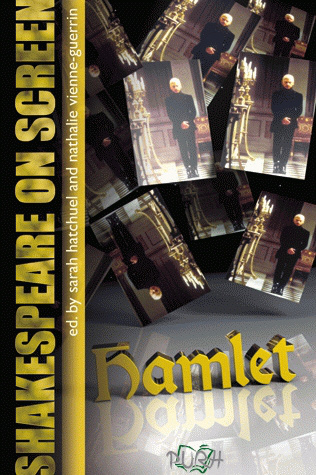Notes on the Contributors
Sarah Hatchuel and Nathalie Vienne-Guerrin — Preface
Samuel Crowl — Hamlet on Film at Mid-Century and Fin de Siècle: Olivier and Branagh
Bernice W. Kliman — Hallmark Hall of Fame: Three Go's at Hamlet (1953, 1970, 2000)
Dominique Goy-Blanquet — The Country Matters in Kozintsev's Elsinore
Jacek Fabiszak — To Cut or Not to Cut? What's in the Written Text of Filmed Hamlets
Russell Jackson — The Gaps in Gertrude: Interpretations of the Role in Five Feature Films
Patricia Lennox — Joseph Papp and Diane Venora Rehearsing Hamlet
Victoria Bladen — The Ghost and the Skull: Rupturing Borders between the Living and the Dead in Filmed Hamlets
Pierre Kapitaniak — Hamlet's Ghost on Screen: The Paradox of the Seventh Art
Mark Thornton Burnett — Hamlet and World Cinema: A Paradigmatic Instance
Anne-Marie Costantini-Cornède — Akira Kurosawa's The Bad Sleep Well (1960) and Aki Kaurismäki's Hamlet Goes Business (1987): Film Noir or Neo-Noir Modern Hamlets, or Genre as an Ideological Signifier
Douglas Lanier — Nouveau Noir: Claude Chabrol's Ophélia, Shakespeare's Hamlet, and the Nouvelle Vague
Sarah Hatchuel, Nathalie Vienne-Guerrin — "I've been killed, but I'm not dead": Remains of Hamlet in the French telefilm L'Embrumé (1980)
Frédéric Delord — André Téchiné's "Shakespearean Trilogy"
Gaëlle Ginestet — Une femme douce by Robert Bresson: Hamlet or Anti-Cinematography
Courtney Lehmann — 2B or not 2B: The Elect(ed) and the Damned in Hamlet 2
Sylvaine Bataille — "Hamlet on Harleys": Sons of Anarchy's Appropriation of Hamlet
Mariangela Tempera — "Not to Be": Referencing the Rest of Hamlet on Screen
José Ramón Díaz Fernández — Hamlet on Screen: An Annotated Filmo-Bibliography

